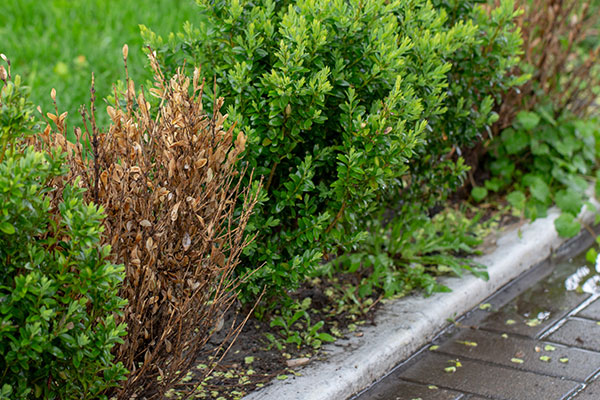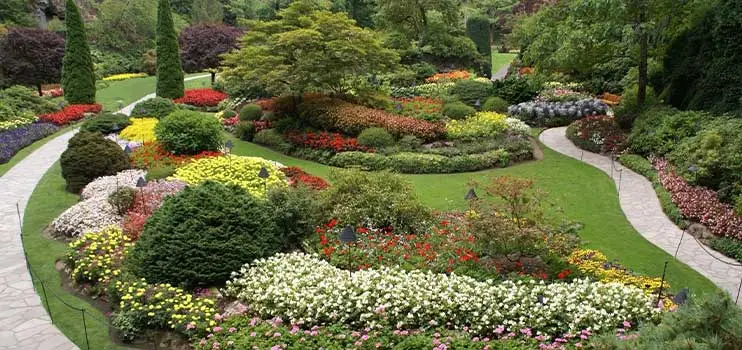Disease Treatment Prevention
Diseases caused by insect and fungal infections are serious threats to trees and shrubs. Without plant health care services, these problems can cause critical damage to trunks, leaves, root systems and more. Feeding from pests, for example, cuts off nutrient flow and water supply to various parts of trees and shrubs, resulting in damage, weakening, and eventually plant death. Without preventative treatments, fungal infections can spread quickly from tree to tree, causing harmful consequences. Work with an expert Arborist to protect your valuable plantings. Reach out to schedule an appointment today.
Common Pests & Diseases
In our area, we have seen an increased count of the following pest and fungal diseases, including:
Spotted Lanternfly
The Spotted Lanternfly is a pest that feeds on more than 70 woody plant species, including popular plantings found in our area: blueberries, lilac, birch, maple, poplar and more. Adult species prefer to feed on specific plantings, such as apple, stone fruit, grapes, black walnut and more.
Symptoms of Spotted Lanternfly
- Wilting foliage
- Branch dieback
- Honeydew (clear sticky substance) at the base of the tree
- Oozing sap from trunk
- Sooty mold at the base of the tree
- Increased bee, ant, and wasp activity due to exposed sap and honeydew
- Swarming, which interferes with people’s ability to enjoy the outdoors
The Dangers of Spotted Lanternfly
- These pests have a very powerful ability to reproduce in mass quantities. Females lay between 30-50 eggs at a time, in what looks like a disgusting gray goop. With an average of two hatches per season, that means each female is creating roughly 100 new spotted lantern flies each year!
- They are not picky about their host. Not only can they hop around easily, they pose a threat to a variety of different industries.
- They have no known predators. Birds do not seem to like to eat them and no other predator has been identified, keeping their population relatively stable.
Treatment Options
At Emerald, we do everything within our power to protect and save your valuable plantings. Our goal is to avoid removing trees and instead, work together with our neighbors to help remove Spotted Lanternfly’s and their egg masses. Through the help of our Plant Health Care Program, our expert Arborists routinely inspect properties and implement application techniques, such as topical or systemic applications. To prevent future problems, we develop a custom plan to prevent and fight these pests from wreaking havoc to trees and properties.
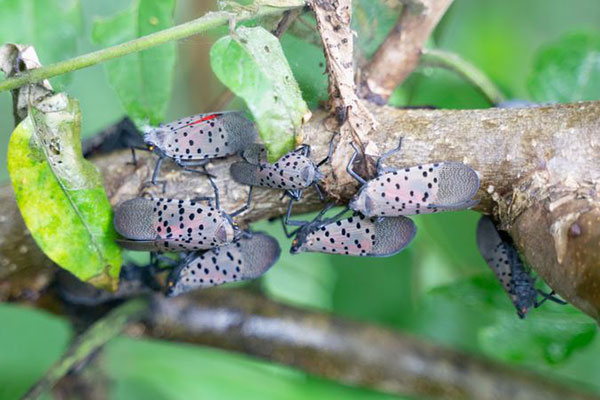
Emerald Ash Borer
Since its discovery in the US in 2002, this insect has killed over 40 million Ash Trees in North America. As of 2016, The Emerald Ash Borer has been confirmed in 24 states, including New York, Connecticut and New Jersey. It is close to impossible to detect an infestation unless the pest has inhabited a tree for a few years, and that is why our team of Arborists knowledgeable about the symptoms and treatments of this invasive pest.
Symptoms of Emerald Ash Borer
- Ash canopy dieback
- Splitting bark
- D-shaped holes
- S-shaped galleries
- Woodpecker activity
Treatment Options
Our Arborists have years of experiencing identifying and treating these pests. At Emerald, we have developed a comprehensive treatment plan to protect your Ash Trees from this highly invasive bark beetle. The first step is to inject your Ash Trees in Late Spring with a preventative treatment called Tree-Age. This treatment will protect your Ash Tree for up to two full years. As an added precaution, we recommend a merit soil drench once during peak growing season. The merit treatment lasts for one year, and is therefore prescribed annually.
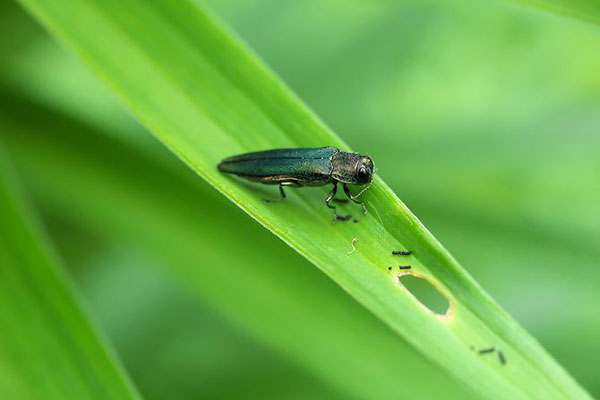
Dutch Elm Disease
Dutch Elm Disease is an extremely dangerous and often fatal disease of trees if left untreated. This disease is considered one of the most destructive shade tree diseases in North America. Once it affects an Elm tree, neighboring trees are soon to be affected. The disease can spread in two ways:
- By the Elm Bark Beetle. Adult beetles tunnel into bark to lay eggs. Once the eggs hatch, larvae begin to feed on sapwood, eventually maturing and leaving the fungus-infested tree. These adults then carry the fungus, introducing the disease to neighboring trees.
- Through interconnected root systems. Neighboring trees can spread from infected trees to uninfected trees through their connected root systems.
Symptoms of Dutch Elm Disease
- Premature leaf drop
- Wilting, yellowing and browning of leaves
- Branch death
- Streaking in sapwood (can be detected by an Arborist)
Treatment Options
Although the American Elm Tree is very susceptible to this disease, there are many preventative treatment options you can take along with an expert. At Emerald, our Arborists and highly trained technicians can prune, protect, and apply safe treatments to ensure your trees are protected. Our professionals work with our clients every season ensuring their landscapes are fortified against such threats, through the help of our Plant Health Care Program coupled with expert care.

Oak Wilt
Oak wilt is a fungal disease specific to Oak Trees. It is fatal to all species of the red oak group (pointy leaf lobes) and less detrimental to those in the white oak family (rounded leaf lobes). Oak wilt is passed from one tree to another through interconnected root systems, or by sap sucking insects who are attracted to freshly cut branches and limbs. This disease spreads at a very rapid pace, often harming mature Oak Trees in a number of weeks.
Symptoms of Oak Wilt
- Branch dieback starting at the top of a tree’s canopy that moves downward
- Brown coloration of leaves that starts on the outer edge of leaves and progresses towards the center
- Wilting leaves in the spring and summer months
- Fungal spores that develop under the bark of infected trees
Treatment Options
With Oak Wilt being such a fast-acting disease, we ask our clients and neighbors to call us immediately if they suspect a problem. There is no cure for Oak Wilt; however, an Arborist can stop this disease from spreading through proper treatments, such as injections and seasonal pruning.
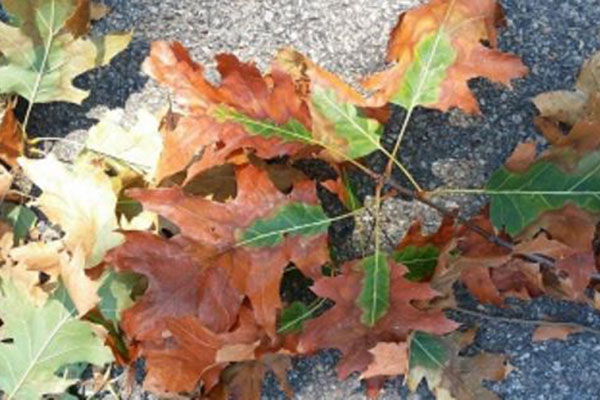
Boxwood Blight
Boxwood Blight is a fungal disease caused by Cylindricladium Pseduonaviculatum. This fungus causes discoloration and lesions on the leaves of shrubs, abrasions that will soon appear on stems soon after. If left untreated, shrubs leaves’ will drop, causing stress to plantings and eventually death.
Symptoms of Boxwood Blight
- Rapid defoliation on leaves (within a matter of weeks)
- Black spots on leaves
- Discoloration on leaves
- Streaks and discoloration on branches
To combat diseases in shrubs, Emerald’s ISA-certified Arborists conduct multiple property inspections of your landscapes each year. During these evaluations, our team determines the overall health of landscapes, diagnoses any disease or problems, and then implements a safe, custom-made treatments.
